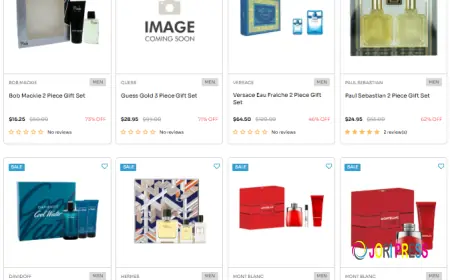Root Beer Market Analysis by Type & Tech
The Root Beer Market is growing due to rising consumer interest in craft sodas, unique flavors, and nostalgic beverages. Increased demand for non-alcoholic options and healthier alternatives also fuels this growth.

Industry Overview
The global Root Beer Market, valued at USD 983.54 million in 2024, is on a steady growth trajectory and is projected to reach USD 1,311.07 million by 2030, reflecting a CAGR of 4.97% during the forecast period. Traditionally a North American favorite, root beer has evolved beyond its cultural origins to become a global beverage with a loyal following, tapping into both nostalgic sentiment and modern consumer preferences.
Root beer stands apart from mainstream sodas by offering a distinctive flavor profile, often enriched with spices, herbs, and botanicals such as sassafras root, wintergreen, licorice, and vanilla. Historically served at soda fountains and enjoyed as a key ingredient in root beer floats, it has successfully transitioned into bottled, canned, and craft-brewed formats to cater to today’s diverse consumer base.
The market today is characterized by a blend of tradition and innovation—heritage brands continue to command strong loyalty, while new entrants bring bold flavors, healthier formulations, and artisanal brewing techniques. This dual dynamic has created a unique competitive environment where both large-scale producers and boutique craft breweries can thrive.
Industry Key Highlights
-
Market Size (2024): USD 983.54 Million
-
Forecasted Market Size (2030): USD 1,311.07 Million
-
CAGR (2024–2030): 4.97%
-
Dominant Product Category: Non-Alcoholic Root Beer
-
Fastest-Growing Distribution Channel: Online Sales
-
Fastest-Growing Region: Asia Pacific
-
Key Consumer Trends: Craft soda enthusiasm, nostalgia-driven purchases, health-conscious reformulations
-
Innovation Drivers: Reduced-sugar options, functional ingredients, sustainable packaging
Market Drivers
1. Nostalgia and Cultural Heritage
Root beer benefits from a strong emotional connection with consumers, particularly in North America. Its association with traditional soda fountains, classic diners, and childhood memories makes it a beverage that resonates across generations. This nostalgia factor ensures consistent baseline demand even in competitive markets.
2. Rise of Craft and Premium Sodas
Consumers seeking unique, small-batch beverages have fueled the rise of artisanal root beer brands. These offerings emphasize natural ingredients, distinctive flavors, and traditional brewing techniques, positioning root beer as a gourmet alternative to mass-market colas.
3. Health-Conscious Consumption
Modern consumers are increasingly selective about beverage choices, favoring products that are low in sugar, free from artificial additives, and enriched with functional benefits. Root beer producers have responded with:
-
Sugar-free options using stevia, monk fruit, or natural cane sugar
-
Low-calorie formulations
-
Probiotic-infused beverages for digestive health
4. Expansion into New Geographic Markets
Once primarily confined to North America, root beer is gaining traction in Asia Pacific, Europe, and parts of Latin America. The growing middle class in emerging economies and the curiosity for Western flavors have created new growth opportunities.
5. E-commerce as a Growth Catalyst
The digital marketplace has opened global distribution possibilities. Direct-to-consumer channels, subscription beverage boxes, and specialty online retailers have allowed smaller brands to compete alongside global giants, reaching niche consumer segments without heavy investment in physical retail.
Download Free Sample Report - https://www.techsciresearch.com/sample-report.aspx?cid=1423
Emerging Trends
1. Functional Root Beer
Health and wellness trends are inspiring brands to add probiotics, vitamins, and herbal extracts to root beer, creating a crossover between indulgence and functional nutrition.
2. Sustainable Packaging
Eco-conscious consumers are pushing for biodegradable cans, recyclable glass bottles, and reduced plastic use. Brands adopting sustainable practices are gaining favor among younger, environmentally aware demographics.
3. Alcoholic Root Beer Revival
The niche category of hard root beer is experiencing a comeback in craft brewing circles. Targeting adult consumers, this product line offers nostalgic flavor with a grown-up twist.
4. Flavor Innovations
Beyond the classic recipe, brands are experimenting with vanilla-forward blends, spicy ginger infusions, honey-sweetened options, and seasonal editions to maintain consumer excitement.
5. Collaborations and Co-Branding
Partnerships with ice cream brands, dessert chains, and breweries are creating new consumption occasions—root beer floats, baked goods, and even root beer-flavored candies.
Competitive Analysis
The root beer market is moderately competitive, with a mix of multinational corporations, heritage brands, and niche craft producers.
Major Players:
-
Keurig Dr Pepper Inc. – Industry leader with flagship brands and global distribution strength.
-
Anheuser-Busch Companies, LLC – Known for hard root beer offerings targeting the alcoholic beverage segment.
-
Bundaberg Brewed Drinks – Strong premium craft positioning with international appeal.
-
Boylan Bottling Co. – Appeals to gourmet soda consumers with glass-bottled, small-batch beverages.
-
Jones Soda Co. – Focuses on youth markets with creative marketing and flavor experimentation.
Competitive Strategies Observed:
-
Expansion of online and D2C sales
-
Investment in health-conscious product development
-
Marketing campaigns leveraging heritage storytelling
-
Entry into new global markets through partnerships
Market Segmentation Insights
By Type
-
Non-Alcoholic Root Beer – Dominates the market with a broad consumer base including families and younger demographics.
-
Alcoholic Root Beer – Smaller but fast-evolving category appealing to craft beer enthusiasts.
By Form
-
Carbonated – Most popular due to traditional effervescent texture and flavor.
-
Non-Carbonated – Growing among consumers seeking a smoother, less fizzy beverage.
By Distribution Channel
-
Supermarkets/Hypermarkets – Still a dominant sales channel for mass-market brands.
-
Online Stores – Fastest-growing segment due to convenience and broader selection.
-
Specialty Stores – Important for premium and craft variants.
By Region
-
North America – Core market, maintaining leadership through brand loyalty and cultural familiarity.
-
Asia Pacific – Fastest growth, driven by youth culture and increasing exposure to Western beverages.
-
Europe – Niche but growing market, particularly in the UK and Germany.
Future Outlook
The global root beer market is set for steady expansion through 2030, supported by:
-
Increased demand for authentic, nostalgic beverages in a modern format
-
Ongoing innovation in flavor profiles and health-oriented formulations
-
Penetration into new and emerging markets
-
Growing synergy between e-commerce and premium beverage segments
However, competition from other soft drink categories, changing sugar regulations, and fluctuating ingredient costs will require brands to remain agile and adaptive.
10 Benefits of This Research Report
-
Comprehensive Market Size & Forecast Data to aid in strategic decision-making.
-
Detailed Consumer Trend Analysis to identify growth opportunities.
-
Competitive Landscape Insights for benchmarking and market positioning.
-
Emerging Market Opportunities mapped for new entrants and existing players.
-
Segmentation Analysis by type, form, channel, and region for targeted strategies.
-
Industry Key Drivers and Challenges outlined for proactive planning.
-
Innovation and Product Development Trends for R&D alignment.
-
Investment Feasibility Insights for stakeholders.
-
Growth Strategies tailored to both established and emerging players.
-
Global Perspective with regional deep-dives for geographic expansion.
Contact Us-
TechSci Research LLC
420 Lexington Avenue, Suite 300,
New York, United States- 10170
M: +13322586602
Website: www.techsciresearch.com
What's Your Reaction?
 Like
0
Like
0
 Dislike
0
Dislike
0
 Love
0
Love
0
 Funny
0
Funny
0
 Angry
0
Angry
0
 Sad
0
Sad
0
 Wow
0
Wow
0


















































